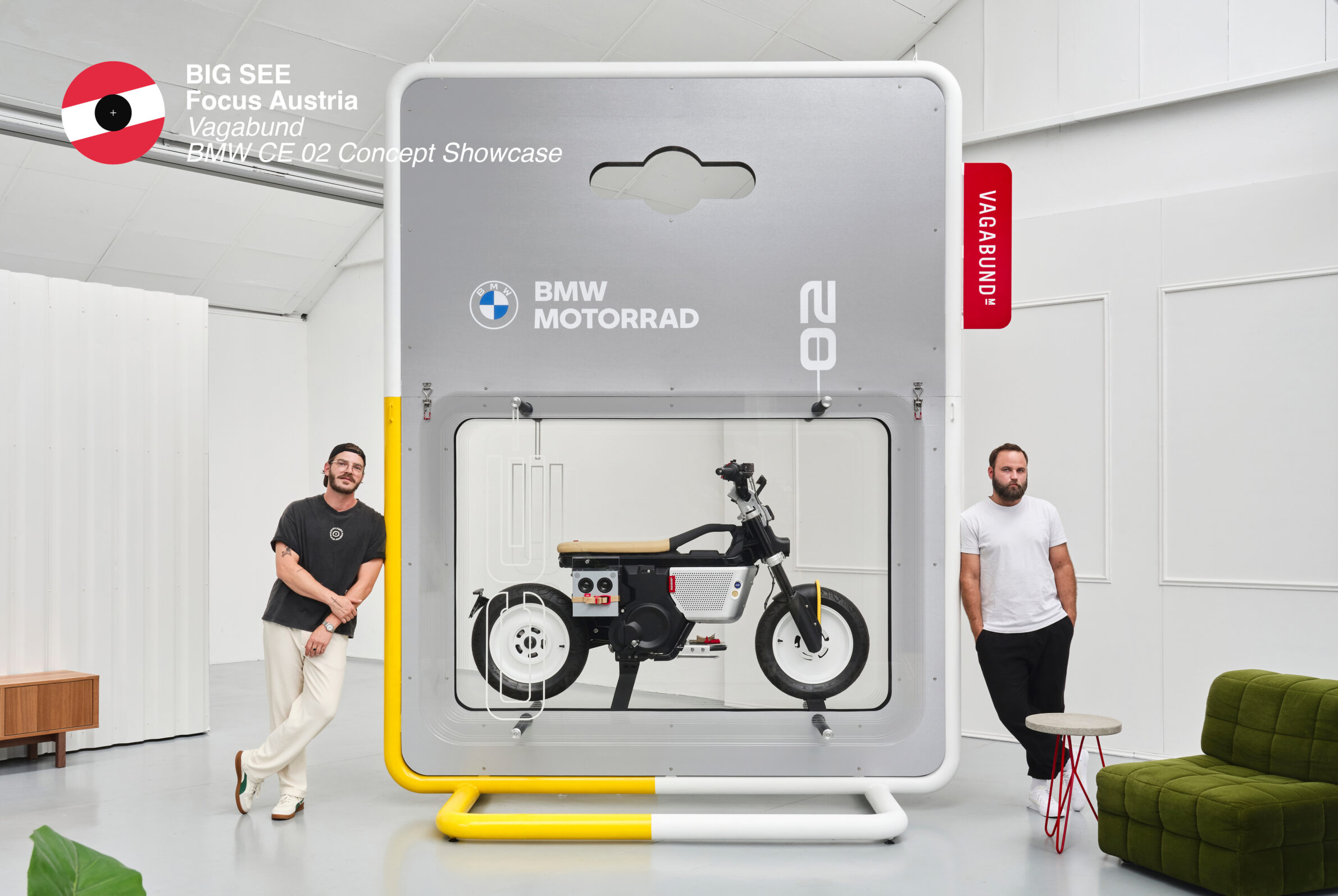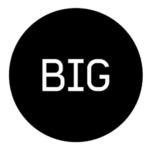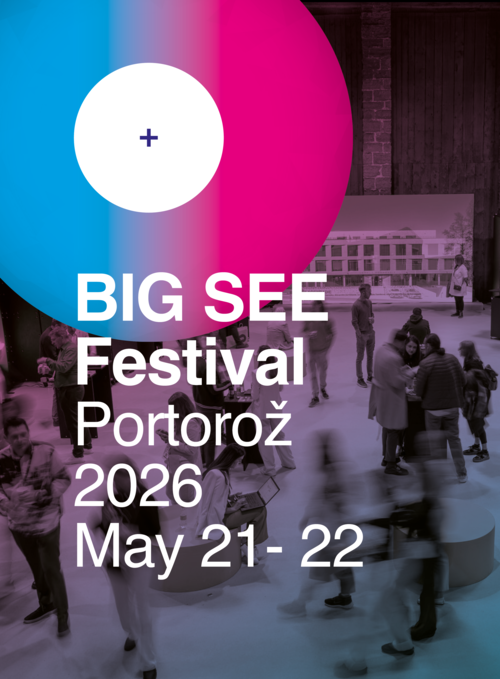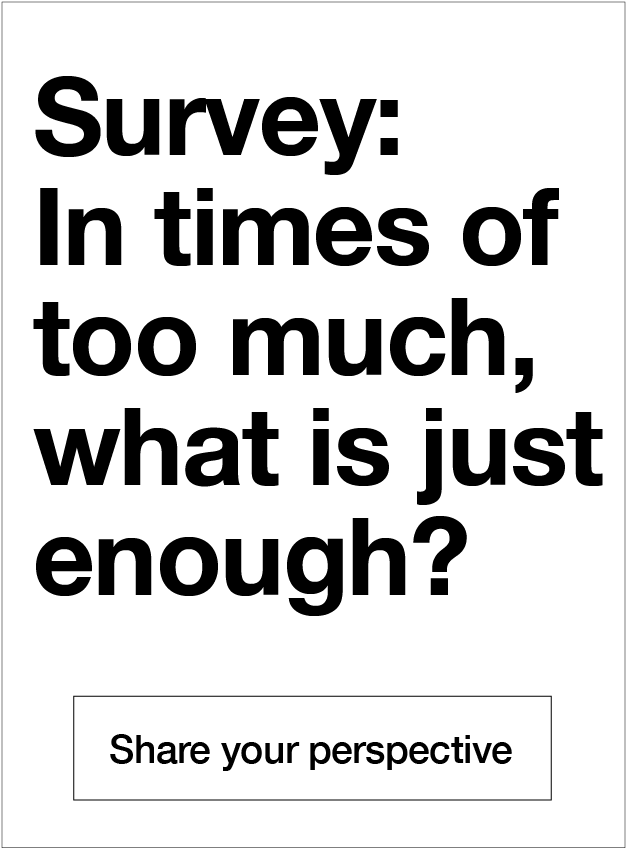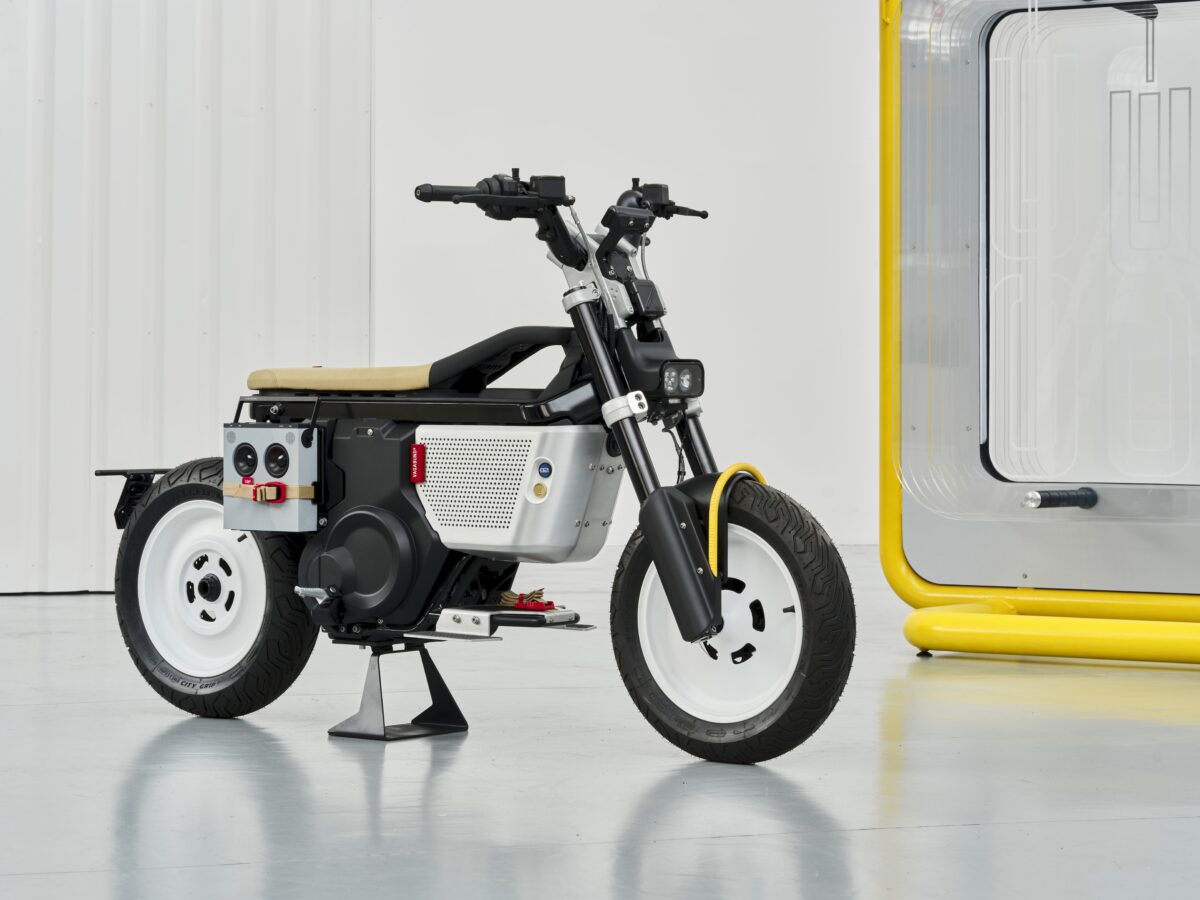
The CE02 conversion by Vagabund is not just a custom bike — it’s a complete design study that reinterprets how personal mobility can be communicated and experienced. Starting with BMW’s electric two-wheeler as a base, Vagabund stripped it down, scanned it in 3D, and rebuilt it with their own design language: clean, purposeful, and layered with cultural references.
Their approach is what they call “retrofuture” — blending the technical clarity of futuristic forms with the warmth and familiarity of retro details. One of the key inspirations came from music culture: specifically, the iconic OB-4 speaker by Teenage Engineering, which was integrated directly into the body. Paired with subtle gestures like grip-tape footrests, hidden compartments, or powder-coated metal parts, the result feels tactile and usable — not just visual.
But what makes the project stand out is its completeness. Vagabund designed not only the vehicle, but also its packaging, staging, and media concept. From custom metal crates with integrated lighting, to a fully art-directed film featuring a young musician navigating urban life, every aspect of the project was produced in-house or through close partners.
The CE02 conversion isn’t just about aesthetics or performance. It’s about showing how design, storytelling, and craftsmanship can come together to redefine how a product is perceived — and how it interacts with culture. It speaks to a generation that sees mobility, sound, and sustainability not as separate topics, but as part of the same lifestyle.
“Mostly, we design for ourselves. If it’s not compatible with our idea of design, we don’t do it.”
– Paul Brauchart, Vagabund Moto
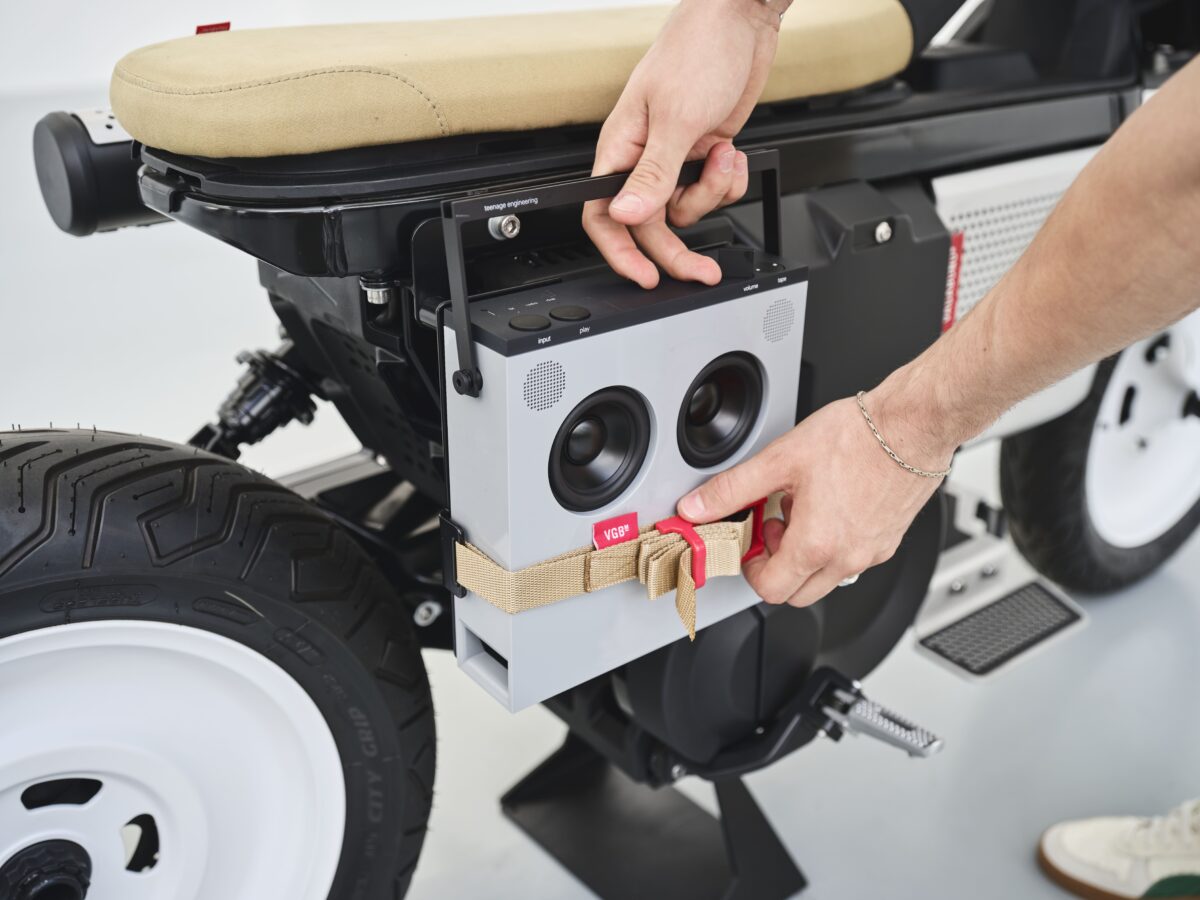
BIG SEE Talks with Paul Brauchart from Vagabund Moto
Q: You started by reworking motorcycles, piece by piece. How did that path lead you to BMW?
A: We’ve done several (private client) projects based on vintage BMWs, and at some point, BMW asked—again and again—for some projects. Our first project for BMW Motorrad back in 2023 was the BMW CE 04 Vagabund Moto Concept.
Q: Vagabund has a strong voice. What defines your identity, and how do you keep it clear and evolving?
A: It’s hard to tell what Vagabund really is because we’re constantly pushing boundaries. We love design and functionality. We are designing, constructing, building, and marketing. And we definitely won’t stop or confine ourselves to certain fields.
We would love to—and are already planning—some furniture and interior projects, talking about collaborations in every other product design field…
Trying to stay hungry, open-minded, and unafraid is our core, I guess.

Q: Who are you designing for? What do you want people to feel when they sit on something you’ve built?
A: Mostly, we design for ourselves. Even when we work on marketing projects for big brands like BMW, we are super clear about what Vagabund is doing or not doing. If it’s not compatible with our idea of design, we don’t do it.
We’ve said no to many lucrative projects over the last few years so that, gladly, we no longer have to explain ourselves. Now people are asking for our design language and brand—bringing our idea of design into other products.We are “INTERPRETING THE STATUS QUO.”
“Trying to stay hungry, open-minded, and unafraid is our core, I guess.”
– Paul Brauchart, Vagabund Moto
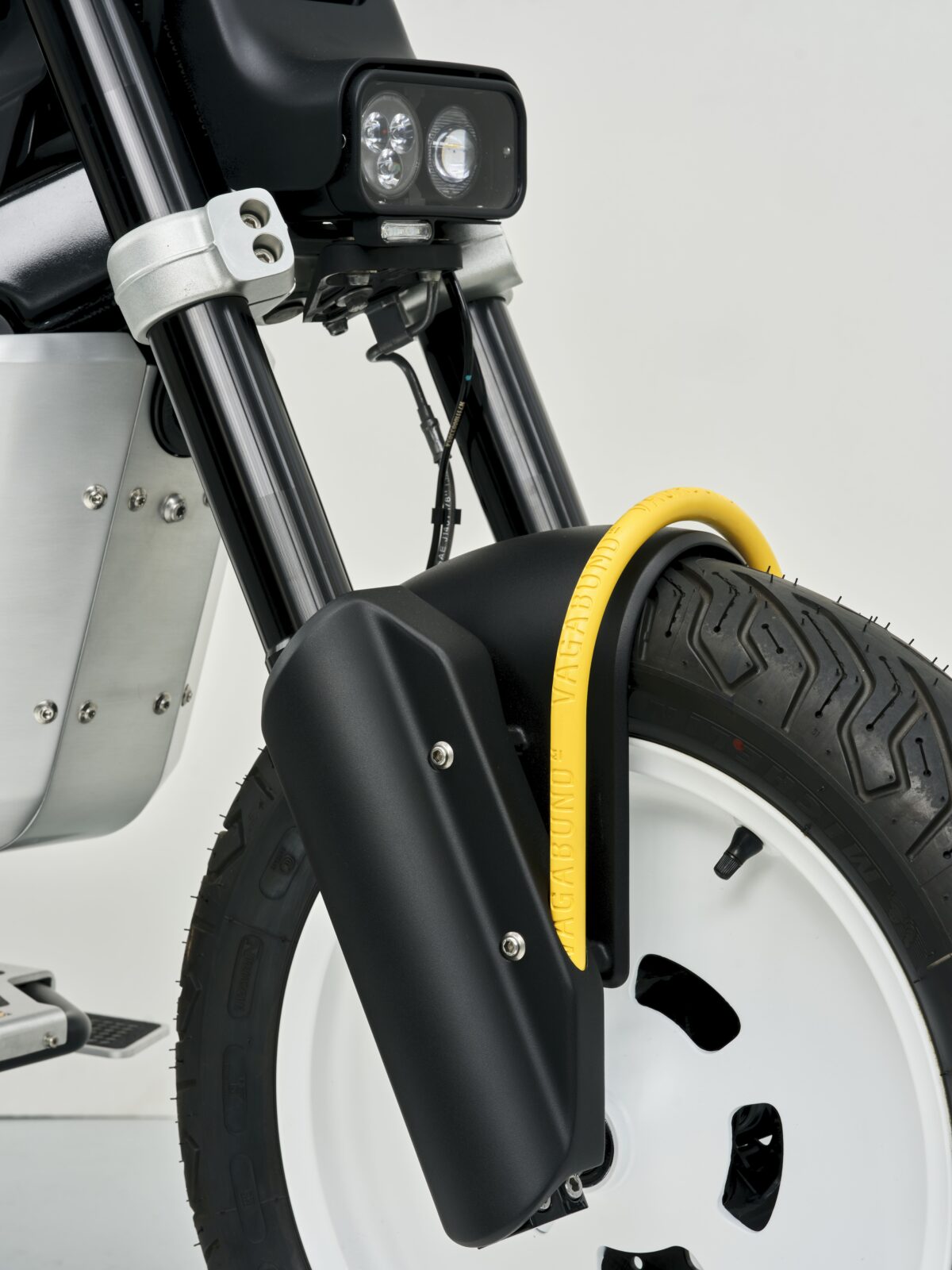
Vagabund moto
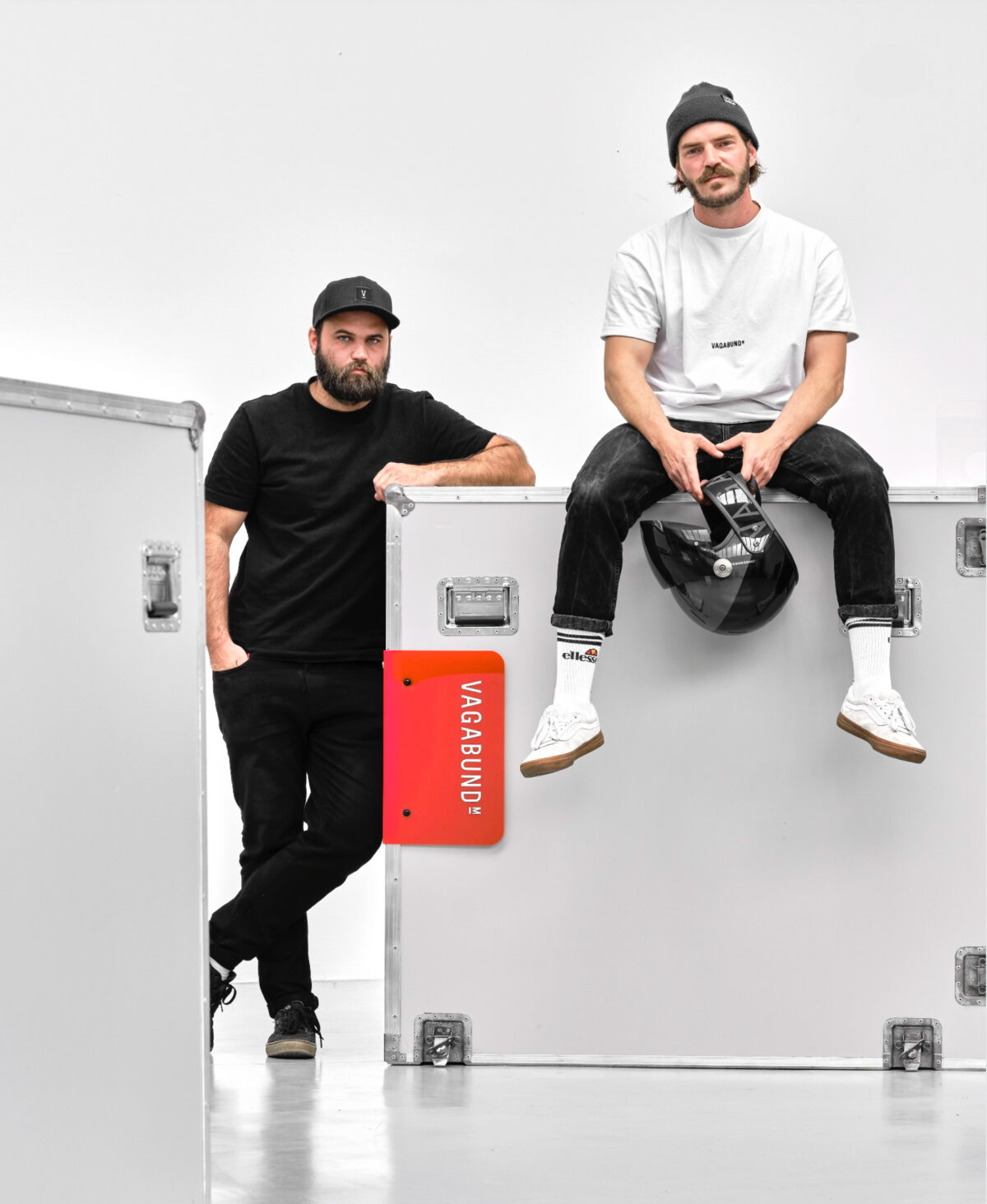
Vagabund Moto is a design and makers studio from Graz, founded by Paul Brauchart (design) and Philipp Rabl (tech). Their work blends product design, engineering, and storytelling—challenging conventions across mobility, branding, and lifestyle.
Project
BMW CE 02 Concept Showcase
Year of Completion:
2024
Location:
Austria
Contacts
Website:
vagabund-moto.com
Instagram:
vagabund_moto
Photography:
Vagabund
Edited by:
Blažka Drnovšek
Powered by

The CE02 conversion by Vagabund is not just a custom bike — it’s a complete design study that reinterprets how personal mobility can be communicated and experienced. Starting with BMW’s electric two-wheeler as a base, Vagabund stripped it down, scanned it in 3D, and rebuilt it with their own design language: clean, purposeful, and layered with cultural references.
Their approach is what they call “retrofuture” — blending the technical clarity of futuristic forms with the warmth and familiarity of retro details. One of the key inspirations came from music culture: specifically, the iconic OB-4 speaker by Teenage Engineering, which was integrated directly into the body. Paired with subtle gestures like grip-tape footrests, hidden compartments, or powder-coated metal parts, the result feels tactile and usable — not just visual.
But what makes the project stand out is its completeness. Vagabund designed not only the vehicle, but also its packaging, staging, and media concept. From custom metal crates with integrated lighting, to a fully art-directed film featuring a young musician navigating urban life, every aspect of the project was produced in-house or through close partners.
The CE02 conversion isn’t just about aesthetics or performance. It’s about showing how design, storytelling, and craftsmanship can come together to redefine how a product is perceived — and how it interacts with culture. It speaks to a generation that sees mobility, sound, and sustainability not as separate topics, but as part of the same lifestyle.
“Mostly, we design for ourselves. If it’s not compatible with our idea of design, we don’t do it.”
– Paul Brauchart, Vagabund Moto

BIG SEE Talks with Paul Brauchart from Vagabund Moto
Q: You started by reworking motorcycles, piece by piece. How did that path lead you to BMW?
A: We’ve done several (private client) projects based on vintage BMWs, and at some point, BMW asked—again and again—for some projects. Our first project for BMW Motorrad back in 2023 was the BMW CE 04 Vagabund Moto Concept.
Q: Vagabund has a strong voice. What defines your identity, and how do you keep it clear and evolving?
A: It’s hard to tell what Vagabund really is because we’re constantly pushing boundaries. We love design and functionality. We are designing, constructing, building, and marketing. And we definitely won’t stop or confine ourselves to certain fields.
We would love to—and are already planning—some furniture and interior projects, talking about collaborations in every other product design field…
Trying to stay hungry, open-minded, and unafraid is our core, I guess.

Q: Who are you designing for? What do you want people to feel when they sit on something you’ve built?
A: Mostly, we design for ourselves. Even when we work on marketing projects for big brands like BMW, we are super clear about what Vagabund is doing or not doing. If it’s not compatible with our idea of design, we don’t do it.
We’ve said no to many lucrative projects over the last few years so that, gladly, we no longer have to explain ourselves. Now people are asking for our design language and brand—bringing our idea of design into other products.We are “INTERPRETING THE STATUS QUO.”
“Trying to stay hungry, open-minded, and unafraid is our core, I guess.”
– Paul Brauchart, Vagabund Moto

Vagabund moto

Vagabund Moto is a design and makers studio from Graz, founded by Paul Brauchart (design) and Philipp Rabl (tech). Their work blends product design, engineering, and storytelling—challenging conventions across mobility, branding, and lifestyle.
Project
BMW CE 02 Concept Showcase
Year of Completion:
2024
Location:
Austria
Contacts
Website:
vagabund-moto.com
Instagram:
vagabund_moto
Photography:
Vagabund
Edited by:
Blažka Drnovšek


